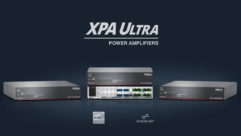
ADA: 20 Years Later
Aug 20, 2010 12:00 PM,
By George Petersen
It was just two decades ago—July 26, 1990—that President George H. W. Bush signed the Americans with Disabilities Act (ADA) into law. In terms of removing barriers and opening new areas of accessibility to millions of Americans, it was truly a landmark day, but even two decades later, there is still some confusion regarding the definitions of exactly to whom it does and does not apply.
Properties that may be exempt from the provisions of the ADA include private clubs, historic buildings, religious affiliations, and even federal buildings, although the latter are covered under the Architectural Barriers Act and the Rehabilitation Act of 1973.
After a few years, ADA amendments (particularly in 1994, but with minor changes since) were added to clarify numerous issues. ADA Title II applies to the operations of state and local governments, including public schools. Title III covers commercial facilities, certain private entities, and public accommodations.
Title III—more specifically, Regulation 28 CFR, Part 36—deals with nondiscrimination in public accommodations and commercial facilities, and is of major interest to systems contractors.
The term “commercial facilities” is clear enough, but according to the ADA, “public accommodations” include places that affect commerce, such as hotels, restaurants, bars, motion-picture houses, theaters, concert halls, stadiums, auditoriums, convention centers, lecture halls, stores, shopping centers, funeral parlors, gas stations, health-care providers, hospitals, public-transportation terminals, museums, libraries, galleries, parks, zoos, private schools, senior centers, gymnasiums, and bowling alleys. Many of those (or similar) facilities would certainly fall into a contractor’s list of prospective clients, along with the bread-and-butter local government and public-school markets we’re all so familiar with.
The entire text of the ADA is hundreds of pages long. It certainly may be useful to know specific details about the placements of railings and grab-bars, or facts concerning limitations on wheelchair ramps—no steeper than a 8.33 percent (1:12 ratio) incline—but knowing about systems contractor-oriented sections is essential.
Regulation 28 CFR, Part 36, Subpart C includes the specific ADA requirements of the facilities described above and, under Auxiliary Aids and Services (sec. 36.303), lists assistive-listening systems, closed-captioning decoders, videotext displays, and other effective methods of making aurally delivered materials available to individuals with hearing impairments.
Fortunately, the U.S. Department of Justice website offers all sorts of ADA-related information and technical assistance. Go to www.ada.gov for resources, numerous short bulletins and technical papers written in lay language, as well as the entire text of the ADA in downloadable text or PDF format. ADA materials also provide an invaluable field reference. With laptop access to these documents, a contractor can go over ADA provisions with clients during any phase of a project—consultation, sales, construction, or installation.
Your clients may be interested in knowing that the IRS offers a Disabled Access Credit (see IRS Form 8826) of up to $5,000 for small businesses for ADA improvements. And companies of any size can take advantage of Internal Revenue Code, Section 190, offering a business expense deduction of up to $15,000 to offset ADA-related eligible access expenditures, including the purchase of adaptive equipment, such as assistive listening devices using IRS publication 535. Go to www.irs.gov for details.
With a list of potential clients and the right gear to spec, your next step is building your knowledge base so you can give solid advice, implement it into your job bids, and make the ADA work for you.









